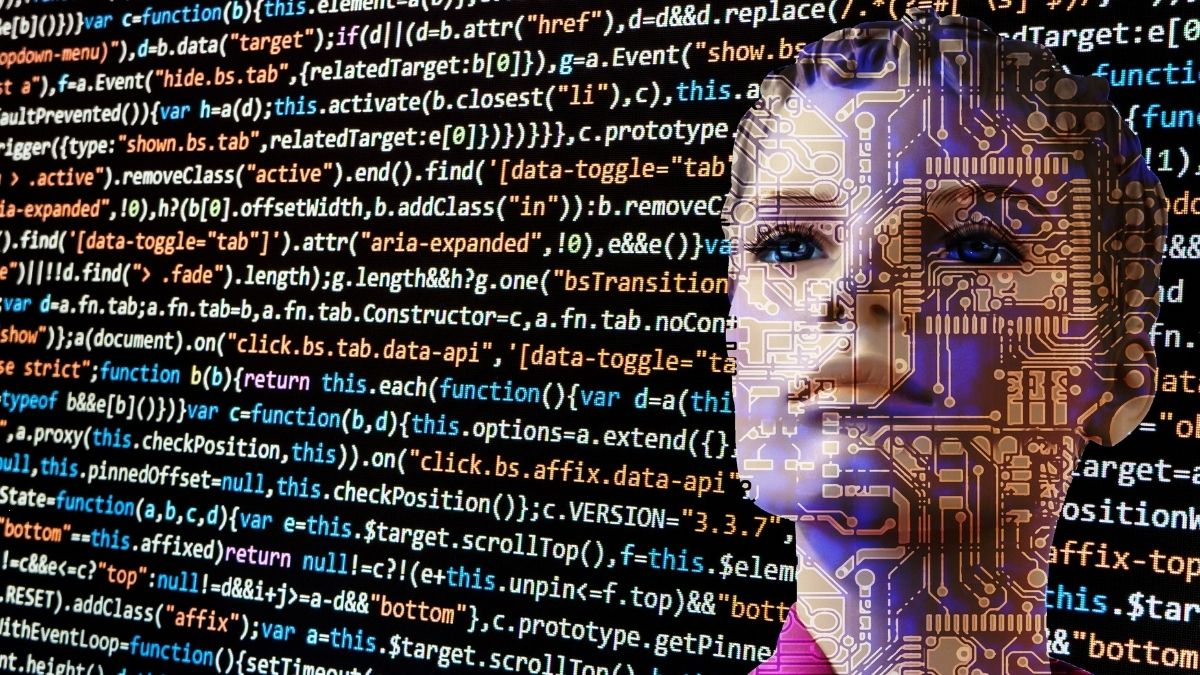The rise of DeepNude free has sparked widespread discussions on privacy, ethics, and technological misuse. This AI-powered software, capable of generating explicit images by removing clothing from photographs, has brought attention to its legality and societal impact. In this article, we will explore the complexities of DeepNude free, its capabilities, and the consequences it brings to the digital world.
As technology continues to advance, tools like DeepNude free challenge the boundaries of societal norms. While it highlights the capabilities of artificial intelligence, it also raises serious ethical concerns. To fully grasp its implications, it is essential to delve into its origins, functions, and the broader impact it has on individuals and society as a whole.
This article aims to provide a thorough examination of DeepNude free, offering readers a clear understanding of its risks and benefits. By the end, you will have a comprehensive view of why this topic is significant and how it affects the digital landscape in profound ways.
Read also:Exploring The Life And Love Of Philippine Leroybeaulieu
Table of Contents
- What is DeepNude Free?
- How Does DeepNude Free Function?
- Legal Challenges Surrounding DeepNude Free
- Ethical Concerns Raised by DeepNude Free
- Privacy Risks of DeepNude Free
- The Broader Impact on Society
- Potential Alternatives and Solutions
- The Technological Innovations Behind DeepNude Free
- Regulatory Measures and Future Steps
- Conclusion
What is DeepNude Free?
DeepNude free is an AI-driven software designed to generate explicit images by digitally removing clothing from photographs. Leveraging advanced deep learning algorithms, the software produces outputs that are often indistinguishable from real images. Initially launched as a paid service, the free version quickly gained popularity due to its accessibility and ease of use.
Origins of DeepNude
The concept of DeepNude originated in 2019 when developers introduced a desktop application capable of manipulating images. The software gained notoriety for its ability to create explicit content without consent, leading to widespread backlash. Although the original creators shut down the service, similar tools have continued to circulate on the internet.
Availability of Free Versions
Despite the discontinuation of the official service, alternative versions of DeepNude free remain accessible on various online platforms. While these versions may not match the quality and features of the original, they are still usable by individuals with basic technical knowledge.
How Does DeepNude Free Function?
DeepNude free operates through advanced neural networks trained on extensive datasets of images. These networks analyze patterns and textures to produce realistic outputs. Below is a detailed breakdown of its operational process:
- Data Collection: The software relies on vast datasets of images to train its algorithms effectively.
- Image Processing: Once an input image is provided, the software processes it using sophisticated AI models to remove clothing.
- Output Generation: The final result is a modified image that appears authentic and lifelike.
Technological Components
DeepNude free incorporates cutting-edge technologies such as:
- Deep Learning: Neural networks trained to recognize and replicate human anatomy with remarkable precision.
- Computer Vision: Algorithms enabling the software to interpret and manipulate visual data accurately.
- Data Augmentation: Techniques enhancing the quality and accuracy of generated images, ensuring high fidelity results.
Legal Challenges Surrounding DeepNude Free
DeepNude free presents significant legal challenges, particularly concerning its misuse. Many jurisdictions have laws prohibiting the creation and distribution of non-consensual explicit content, often referred to as "deepfake pornography." However, enforcing these laws is complicated by the anonymity of online users.
Read also:Exploring The Iconic Career And Stature Of Jack Nicholson
Current Legal Frameworks
Several countries have implemented regulations to address the misuse of deepfake technology. For instance:
- The United States has introduced legislation targeting non-consensual pornography, aiming to protect victims' rights.
- European Union regulations emphasize user consent and data protection, striving to safeguard individuals from harm.
Challenges in Enforcement
Enforcing laws against DeepNude free remains a daunting task. Factors such as jurisdictional boundaries, limited resources, and rapid technological advancements complicate efforts to combat this issue effectively.
Ethical Concerns Raised by DeepNude Free
The ethical implications of DeepNude free are far-reaching. By enabling the creation of explicit content without consent, the software undermines fundamental human rights and dignity. Victims of such misuse often suffer severe emotional distress, reputational damage, and financial losses.
Violation of Consent
A major ethical concern with DeepNude free is its disregard for consent. Individuals whose images are used without permission face violations of their privacy and autonomy. This raises critical questions about the moral responsibility of both developers and users.
Impact on Vulnerable Populations
Women, minorities, and other marginalized groups are disproportionately affected by deepfake technology. DeepNude free exacerbates existing inequalities by perpetuating harmful stereotypes and reinforcing systemic biases, further marginalizing already vulnerable communities.
Privacy Risks of DeepNude Free
DeepNude free poses a substantial threat to individual privacy. With the proliferation of digital tools, safeguarding personal information has become increasingly challenging. The software's ability to generate realistic images from publicly available photographs underscores the urgent need for stronger privacy protections.
Data Security Measures
To mitigate the risks associated with DeepNude free, individuals and organizations must adopt robust data security practices. These include:
- Restricting the sharing of personal photographs online to minimize exposure.
- Utilizing encryption and secure storage solutions to protect sensitive data.
- Staying informed about emerging threats and technologies to enhance awareness and preparedness.
Role of Social Media Platforms
Social media companies play a pivotal role in combating the misuse of deepfake technology. By implementing stringent content moderation policies and investing in detection tools, these platforms can help safeguard users from harm and promote a safer online environment.
The Broader Impact on Society
The emergence of DeepNude free reflects broader societal trends concerning technology and ethics. As AI continues to shape the world, it is crucial to consider its implications for human relationships, trust, and accountability.
Trust and Misinformation
DeepNude free contributes to the growing challenge of misinformation by undermining trust in digital media. When people can no longer distinguish between real and fake content, the credibility of all forms of communication is compromised, leading to widespread distrust.
Educational Initiatives
Addressing the challenges posed by DeepNude free requires a multifaceted approach. Educational programs focused on digital literacy and ethical AI use can empower individuals to navigate the complexities of modern technology with confidence and responsibility.
Potential Alternatives and Solutions
While DeepNude free presents numerous challenges, viable alternatives and solutions exist to mitigate its impact. These include:
- Developing AI tools that prioritize user consent and privacy, ensuring ethical use of technology.
- Encouraging responsible innovation through ethical guidelines and frameworks, fostering accountability among developers.
- Supporting research into detection and prevention technologies to combat the misuse of deepfake technology effectively.
Collaboration Between Stakeholders
Successfully addressing the issues surrounding DeepNude free demands collaboration between governments, technology companies, and civil society organizations. By working together, these stakeholders can create a safer and more equitable digital environment, prioritizing the well-being of all individuals.
The Technological Innovations Behind DeepNude Free
The development of DeepNude free exemplifies the rapid pace of technological advancements in AI and machine learning. These innovations have the potential to revolutionize industries, but they also introduce new risks and challenges that must be carefully managed.
Applications of Deep Learning
Beyond its controversial uses, deep learning has numerous positive applications, including:
- Medical imaging analysis for early detection of diseases, improving healthcare outcomes.
- Enhanced cybersecurity measures through anomaly detection, protecting against cyber threats.
- Improved accessibility tools for individuals with disabilities, promoting inclusivity and empowerment.
Future Directions
As research in AI continues to evolve, it is imperative to ensure that technological advancements align with ethical principles. This involves fostering dialogue between developers, policymakers, and the public to shape the future of AI responsibly and inclusively.
Regulatory Measures and Future Steps
Regulatory bodies worldwide are taking steps to address the challenges posed by DeepNude free. These efforts include:
- Introducing comprehensive legislation targeting deepfake technology to protect individuals' rights.
- Encouraging international cooperation to combat cross-border threats and promote global safety.
- Investing in education and awareness campaigns to inform the public about the risks and responsible use of AI technologies.
Public Participation
Public participation is vital in shaping effective regulatory frameworks. By engaging with policymakers and sharing their concerns, individuals can help ensure that regulations reflect the needs and values of society, promoting fairness and justice in the digital age.
Conclusion
DeepNude free represents a complex intersection of technology, ethics, and society. While it showcases the incredible potential of AI, it also highlights the urgent need for responsible innovation and regulation. By understanding its functionality, implications, and potential solutions, we can work towards a future where technology enhances rather than undermines human dignity.
We invite you to share your thoughts and experiences in the comments below. Additionally, feel free to explore other articles on our website for more insights into the world of AI and its impact on our lives.


